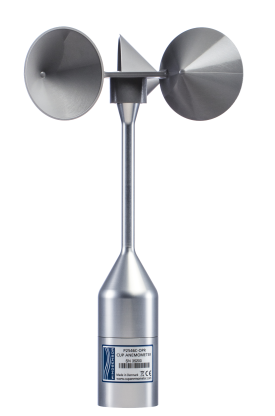Why an Anemometer is Crucial for Your Environmental Information Collection
Why an Anemometer is Crucial for Your Environmental Information Collection
Blog Article
Anemometers Introduced: Comprehending Their Relevance in Environmental Tracking and Safety Steps
The function of anemometers in environmental tracking and security steps is often ignored, yet their value is indisputable. From meteorology to aeronautics safety, anemometers play an important role in supplying precise information that informs decision-making processes and enhances general safety and security.
History of Anemometers
The development of anemometers can be mapped back to the ancient worlds where fundamental wind gauging gadgets were very first used. One of the earliest known anemometers was the hemispherical cup anemometer created by Leon Battista Alberti in the 15th century.
Over the years, developments in technology led to the growth of even more contemporary anemometers, including ultrasonic anemometers and laser Doppler anemometers, offering enhanced precision and efficiency in gauging wind speed and direction. The history of anemometers showcases a remarkable trip of innovation and development in the field of weather forecasting.
Sorts Of Anemometers
Throughout the field of meteorology, different sorts of anemometers have actually been developed to properly measure wind speed and instructions. The most typical type is the cup anemometer, which includes 3 or four cups installed on horizontal arms that revolve with the wind. As the mugs spin, the speed at which they revolve is straight symmetrical to the wind speed. One more extensively made use of type is the vane anemometer, which includes a tail or fin that aligns itself with the wind instructions. This positioning allows the tool to determine the wind direction. Sonic anemometers use ultrasonic signals to gauge wind speed and direction precisely. They are commonly utilized in research study applications due to their high accuracy. Hot-wire anemometers operate based upon the concept that the cooling impact of wind on a warmed cable is proportional to the wind speed. These anemometers appropriate for measuring low wind rates with high precision. Each sort of anemometer has its strengths and is selected based upon the certain requirements of the surveillance task available.
Applications in Weather Forecasting
Having actually reviewed the different sorts of anemometers utilized in weather forecasting for determining wind rate and instructions, it is crucial to discover their functional applications in the field. Anemometers play a crucial duty in weather forecasting by offering real-time and exact information on wind problems (anemometer). Meteorologists make use of anemometers to check wind rate and instructions to anticipate weather condition patterns, concern cautions for severe weather condition events like tornadoes, typhoons, and tornados, and analyze climatic problems for air travel safety
In weather forecasting, anemometers assist in recognizing local and local wind patterns, which are crucial for anticipating weather changes and figuring out climatic fads. These devices are additionally used in research study to study microclimates, metropolitan warmth islands, and air pollution diffusion. Furthermore, anemometers are used in agriculture to maximize crop management practices, such as watering and chemical application, based on wind problems.
Significance in Aviation Security
An integral facet of ensuring air travel safety and security exists in the meticulous monitoring of wind conditions using anemometers. Anemometers play an important duty in air travel by providing real-time information on wind speed and instructions, assisting pilots in making notified choices throughout liftoff, trip, and touchdown. Unpredictable and solid winds can considerably affect airplane operations, making it necessary for air travel authorities to depend on accurate wind dimensions to ensure the security of passengers and team.

In the dynamic environment of aviation, where also small adjustments in wind rate and direction can have profound impacts, anemometers stand as essential tools for promoting secure and safe flight.
Duty in Environmental Study
Exactly how do anemometers add to improvements more in ecological study? Anemometers play an essential function in environmental study by providing important data on wind speed and direction. This details is important for comprehending various atmospheric procedures, such as air pollution dispersion, climate patterns, and climate change. By precisely determining wind qualities, anemometers assist researchers evaluate the activity of pollutants airborne, assess the effect of industrial emissions, and predict the spread of pollutants in the setting.


Final Thought
In verdict, anemometers have actually played a vital duty in ecological surveillance and safety and security actions. Understanding the importance of anemometers is necessary for accurately gauging wind rate and instructions, which is essential for anticipating weather patterns, guaranteeing secure aeronautics procedures, and conducting environmental studies.
One of the earliest well-known anemometers was the hemispherical cup anemometer created by Leon Battista Alberti in the 15th century. Over the years, advancements in innovation led to the growth of more modern anemometers, including ultrasonic anemometers and laser Doppler anemometers, providing raised accuracy and efficiency in gauging wind rate and direction. Hot-wire anemometers operate based on the principle that the cooling impact of wind on a warmed cable is proportional to the wind rate. Meteorologists use anemometers to monitor wind rate and direction to anticipate climate patterns, issue cautions for extreme weather condition events you could check here like typhoons, tornadoes, and tornados, and analyze climatic conditions for aeronautics safety and security.
Recognizing the value of anemometers is vital for precisely measuring wind speed and direction, which is vital for anticipating weather patterns, making certain risk-free aviation procedures, and performing ecological research studies. (anemometer)
Report this page